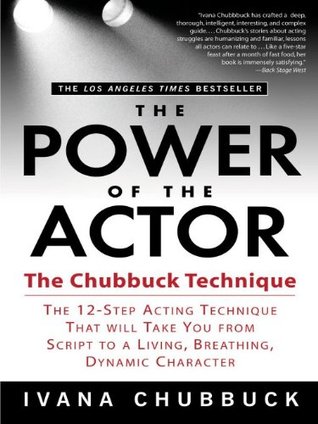Kindle Notes & Highlights
all of the technique’s other tools will temper what and how you handle the props—whether you pick up a book angrily, with lust or as a way to impress. As a result, using props informs the audience about what you are - really thinking and feeling.
Remember: What you DO in the scene isn’t only prescribed by the DOINGS described in the text of the scene.
The following are suggestions for possible DOINGS. They should be handwritten (as always, in pencil) and located to the left of the dialogue, where the DOING will most likely take place.
Tool #10: INNER MONOLOGUE INNER MONOLOGUE is the dialogue going on inside your head that you don’t speak out loud.
Remember: INNER MONOLOGUE is defined paranoia. It’s all those thoughts you can’t say out loud because it will make you seem insecure, vulgar, crazy, stupid or prejudiced.
When crafting your INNER MONOLOGUE always use “you” instead of “he” or “she.”
The INNER MONOLOGUE you write is just a guideline. It is not additional dialogue to memorize.
Whether you’re rehearsing or performing, the INNER MONOLOGUE will vary slightly each time you run the scene.
INNER MONOLOGUE should be handwritten in pencil between the dialogue (exactly where you would use the INNER MONOLOGUE when you are acting the script). Put the INNER MONOLOGUE between quotes and under the dialogue so that you can distinguish it from the other choices you’ve already made.
When writing your own INNER MONOLOGUE, it is up to you to make it personal with the thoughts, ideas, needs and people that are distinct to your own life.
INNER MONOLOGUE starts before the scripted dialogue.
INNER MONOLOGUE keeps something going on behind your eyes, further establishing a scripted character into a flesh-and-blood human being.
Tool #11: PREVIOUS CIRCUMSTANCES This is a character’s history that makes them the kind of person they are today.
you must first discover your character’s history as it relates to the script. Then you connect the script’s PREVIOUS CIRCUMSTANCES to parallel emotional experiences from your own life,
PREVIOUS CIRCUMSTANCES put the final layer on becoming a living, breathing, three-dimensional human being.
Tool #12: LET IT GO Trust the work that you’ve done.
In a three-or-more-person scene, each character works with one SCENE OBJECTIVE and then selects a hot person in the scene to focus on.
A hot person is the person your character wants to win their SCENE OBJECTIVE from.
This is the person your character wants to most affect.
All the other people in the scene are witting or unwitting allies in gaining your SCENE OBJECTIVE.
Using the hot person, witting/unwitting ally system allows you to focus on one SCENE OBJECTIVE. This keeps you from the confusion of trying to recall many SCENE OBJECTIVES for many people and more accurately represents what we really do when we are in the midst of more than two people.
Spoken interchange goes like this: First you listen. Then you take it in and respond internally. Then you figure out how you want to respond to what was said (or done). And then, and only then, do you speak. If you’re in such a hurry to get to the words, behavior can’t happen.


